This is the circuit i'm creating.

BTW: The light pink area is a D flip flop.
(From left to right)
- The green area is a microphone with a preamp.
- The signal passes through a low pass filter, with a cutoff frq. of 300Hz (Yellow)
- It then passes through a peak detector, which holds on to the peak value until the capacitor discharges [discharge speed controlled by a 150Ohm var. resistor] (Orange)
- An op amp is acting as a comparator. If the signal that comes off the low pass filter is higher than the (smooth) peak detector signal, it should output 5v, other wise, 0v. (Light blue)
- This signal then gets smoothed by another peak detector, which discharges 0.25 seconds. (Purple)
- A D FLip Flop, toggles between the Q and Q' terminals, which should turn on either transistor (Pink)
- The change in resistance across the 555 timer circuit, replaces a 100k Ohm potentiometer, being turned backwards and forwards. I hope that this will toggle a servo between to definite positions.
In essence, all I want is for the servo to toggle between to definite possitions, to the beat of music.
- Is there an easier way to achieve my essential goal?
- Does my circuit work like I think it should?
- Do you have any ideas on how i could improve/fix this circuit?
The original PWM Controller:

